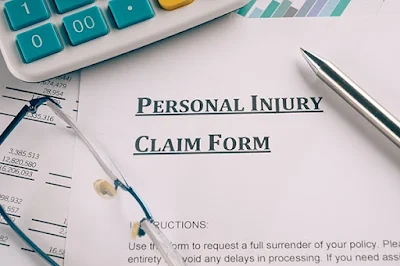Have you found yourself the unfortunate victim of someone else's negligence? While physical and emotional injuries are the immediate concern, seeking compensation through a personal injury claim can often feel overwhelming.
Navigating the Maze: Understanding the Elements of a Personal Injury Claim
Fret not! Demystifying the key elements of such claims can empower you to navigate this legal terrain with confidence. Let's delve into the four pillars that stand between you and the justice you deserve:
1. Duty of Care: Imagine a tightrope walker performing without a net. Their safety becomes everyone's concern. Just like that, certain relationships inherently create a duty of care, meaning one party is responsible for not harming the other. Doctors owe a duty to treat patients competently, drivers to operate vehicles safely, and property owners to keep their premises hazard-free.
2. Breach of Duty: Now, picture the tightrope walker losing their balance and plummeting. This represents a breach of duty, where the responsible party has failed to uphold their obligation. A reckless driver speeding through a red light, a doctor misdiagnosing a critical illness, or a slippery floor in a poorly maintained building are all potential breaches.
3. Causation: But what if another tightrope walker nearby stumbled, causing the first to fall? In that case, establishing causation becomes crucial. You must prove that the breach of duty directly led to your injuries. Did the speeding car collide with you? Did the misdiagnosis result in unnecessary complications? Did the slip and fall fracture your hip? The burden of proof falls on you to connect the dots.
4. Damages: Finally, imagine the fallen tightrope walker nursing their wounds. These represent damages, the tangible and intangible losses you suffer due to the injury. Medical bills, lost wages, pain and suffering, emotional distress, and even diminished quality of life are all factors considered in calculating appropriate compensation.
Remember, these elements are not independent acts in a play. They work together, forming a chain of evidence that needs to be strong and undeniable for your claim to succeed. Seek guidance from a qualified personal injury attorney, your legal companion on this journey. They can help you gather evidence, navigate legal complexities, and build a compelling case that brings you the justice and compensation you deserve.
So, while the road to recovery may be arduous, understanding these fundamental elements empowers you to take control of your situation and move towards a brighter future. Don't hesitate to fight for what you rightfully deserve – remember, knowledge is power, and in this maze of legal intricacies, knowing the elements is the first step towards finding your way out.
The Four Pillars of a Personal Injury Claim: Duty, Breach, Causation, and Damages
Imagine a wobbly bridge. To cross it safely, you need four strong pillars to hold it up: duty, breach, causation, and damages. These are the four essential elements that must be proven in a personal injury claim to reach the other side – compensation.
1. The Duty of Care:
This pillar establishes the legal obligation of one person (the defendant) to act with reasonable care towards another (the plaintiff). It's like the bridge's foundation, ensuring everyone has a right to expect a safe passage. A doctor has a duty of care towards their patient, a property owner towards their visitor, and a driver towards other drivers and pedestrians.
2. The Breach of Duty:
This pillar proves that the defendant failed to uphold their duty of care. It's like the bridge planks being warped and cracked, creating a dangerous obstacle. A doctor who prescribes the wrong medication, a property owner who fails to fix a broken staircase, or a driver who speeds and causes an accident – all breach their duty.
3. The Causation Link:
This pillar establishes that the defendant's breach directly caused the plaintiff's injuries. It's like the bridge collapsing and causing someone to fall. The plaintiff must prove that but for the defendant's breach, their injuries wouldn't have happened. A missed diagnosis leading to a worsened illness, a slip and fall on a wet floor, or a car crash caused by reckless driving – all demonstrate clear causation.
4. The Pillars of Damages:
This final pillar proves that the plaintiff suffered actual losses as a result of their injuries. It's like the bridge collapsing and causing someone to lose their belongings. Damages can be economic, like medical bills and lost wages, or non-economic, like pain and suffering, emotional distress, and loss of enjoyment of life. Both types must be quantified and presented to the court.
Building a Strong Case:
Each element of a personal injury claim needs to be supported by evidence. This can include medical records, witness statements, accident reports, and expert testimony. A skilled personal injury lawyer can help gather and present this evidence, ensuring each pillar of your claim stands strong.
Remember, just like a bridge, a personal injury claim requires a solid foundation. Understanding the four elements – duty, breach, causation, and damages – is crucial for navigating the legal landscape and securing the compensation you deserve.
